
Agricultural and construction machinery company Deere (NYSE: DE) reported Q2 CY2025 results topping the market’s revenue expectations, with sales up 5.5% year on year to $12.02 billion. Its GAAP profit of $4.75 per share was 3.6% above analysts’ consensus estimates.
Is now the time to buy Deere? Find out by accessing our full research report, it’s free.
Deere (DE) Q2 CY2025 Highlights:
- Revenue: $12.02 billion vs analyst estimates of $11.75 billion (5.5% year-on-year growth, 2.3% beat)
- EPS (GAAP): $4.75 vs analyst estimates of $4.59 (3.6% beat)
- Operating Margin: 13%, down from 20.2% in the same quarter last year
- Free Cash Flow Margin: 12%, down from 24.4% in the same quarter last year
- Market Capitalization: $139.1 billion
Company Overview
Revolutionizing agriculture with the first self-polishing cast-steel plow in the 1800s, Deere (NYSE: DE) manufactures and distributes advanced agricultural, construction, forestry, and turf care equipment.
Revenue Growth
A company’s long-term sales performance is one signal of its overall quality. Any business can have short-term success, but a top-tier one grows for years. Unfortunately, Deere’s 4.6% annualized revenue growth over the last five years was tepid. This fell short of our benchmark for the industrials sector and is a rough starting point for our analysis.
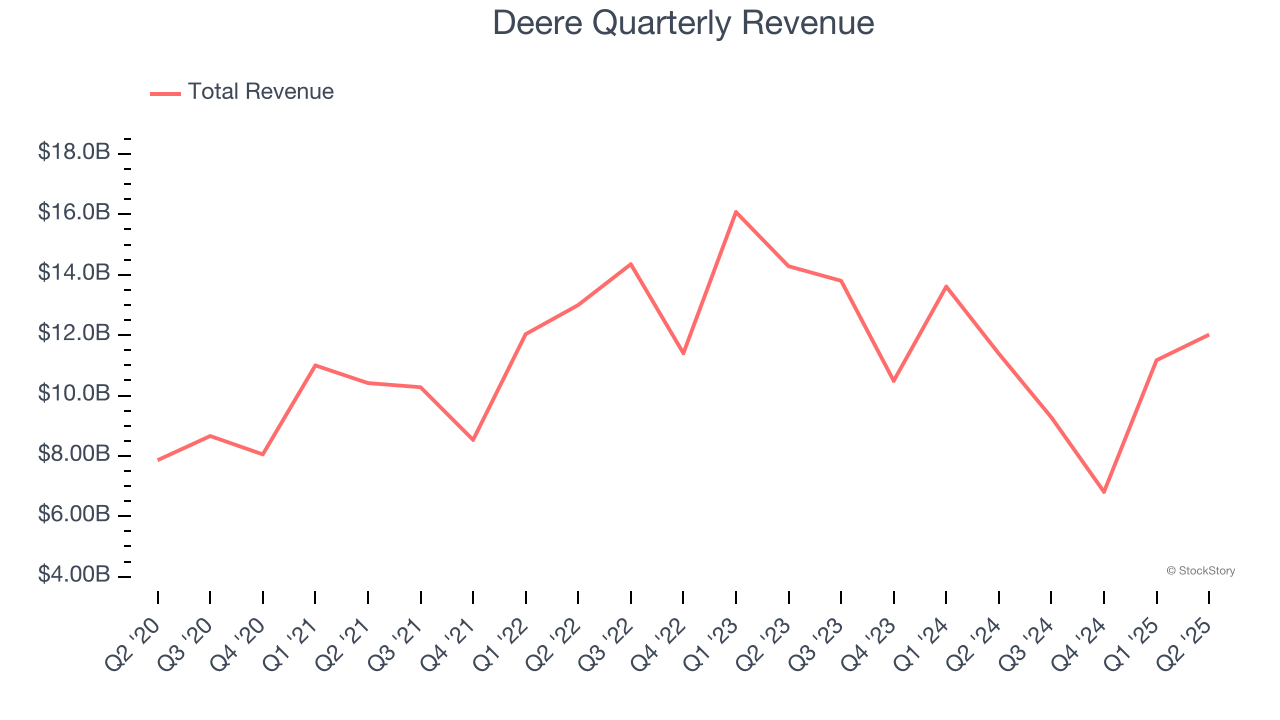
Long-term growth is the most important, but within industrials, a half-decade historical view may miss new industry trends or demand cycles. Deere’s performance shows it grew in the past but relinquished its gains over the last two years, as its revenue fell by 16.3% annually. Deere isn’t alone in its struggles as the Agricultural Machinery industry experienced a cyclical downturn, with many similar businesses observing lower sales at this time. 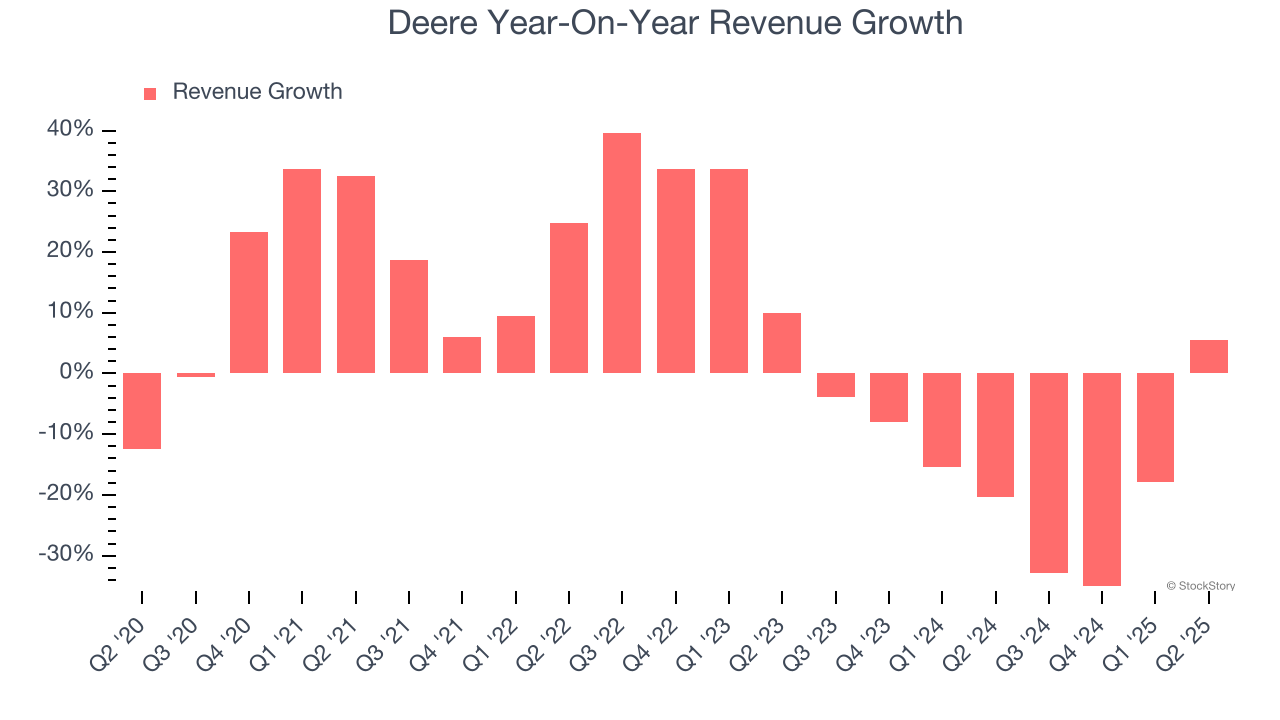
We can dig further into the company’s revenue dynamics by analyzing its three most important segments: Production & Precision Agriculture
, Construction & Forestry
, and Small Agriculture & Turf, which are 35.6%, 25.5%, and 25.2% of revenue. Over the last two years, Deere’s revenues in all three segments declined. Its Production & Precision Agriculture
revenue (tractors, harvesters, tillage) averaged year-on-year decreases of 26.5% while its Construction & Forestry
(loaders, excavators, dump trucks) and Small Agriculture & Turf (mowers and other small vehicles) revenues averaged drops of 13% and 16.7%. 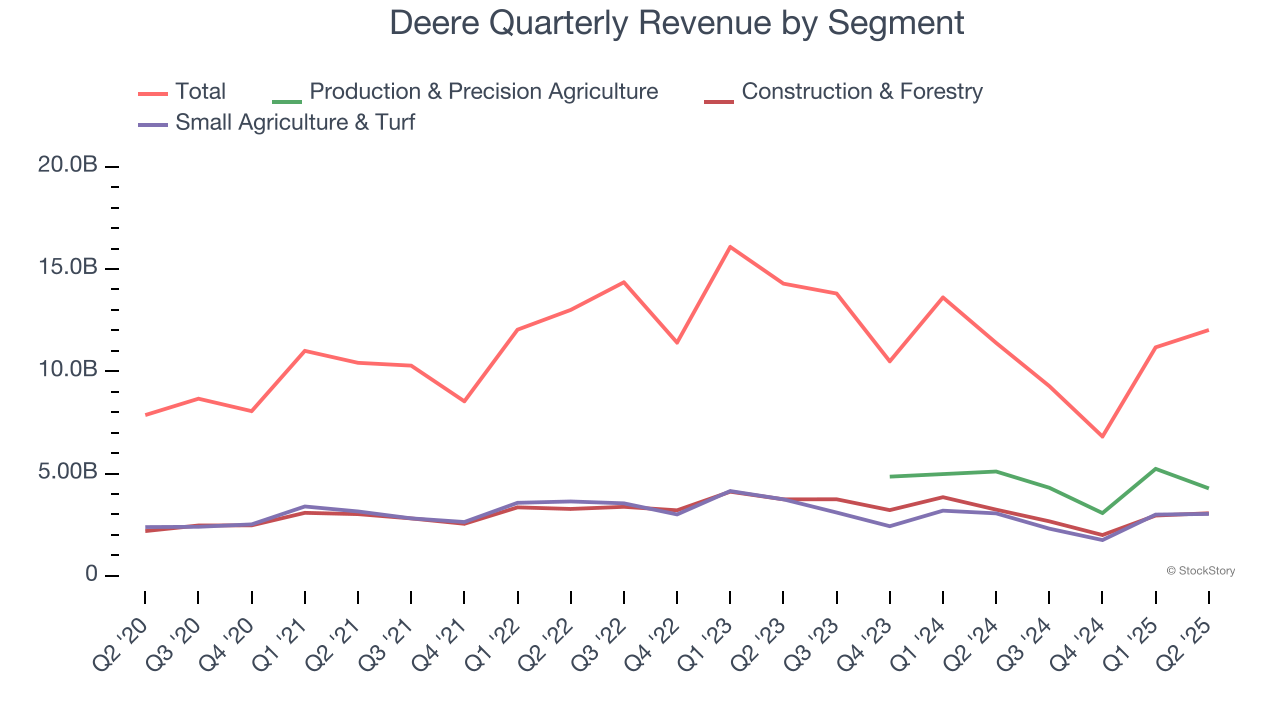
This quarter, Deere reported year-on-year revenue growth of 5.5%, and its $12.02 billion of revenue exceeded Wall Street’s estimates by 2.3%.
Looking ahead, sell-side analysts expect revenue to grow 16.5% over the next 12 months, an improvement versus the last two years. This projection is eye-popping for a company of its scale and suggests its newer products and services will catalyze better top-line performance.
Unless you’ve been living under a rock, it should be obvious by now that generative AI is going to have a huge impact on how large corporations do business. While Nvidia and AMD are trading close to all-time highs, we prefer a lesser-known (but still profitable) stock benefiting from the rise of AI. Click here to access our free report one of our favorites growth stories.
Operating Margin
Deere has been a well-oiled machine over the last five years. It demonstrated elite profitability for an industrials business, boasting an average operating margin of 20.1%.
Looking at the trend in its profitability, Deere’s operating margin decreased by 4.4 percentage points over the last five years. This raises questions about the company’s expense base because its revenue growth should have given it leverage on its fixed costs, resulting in better economies of scale and profitability.
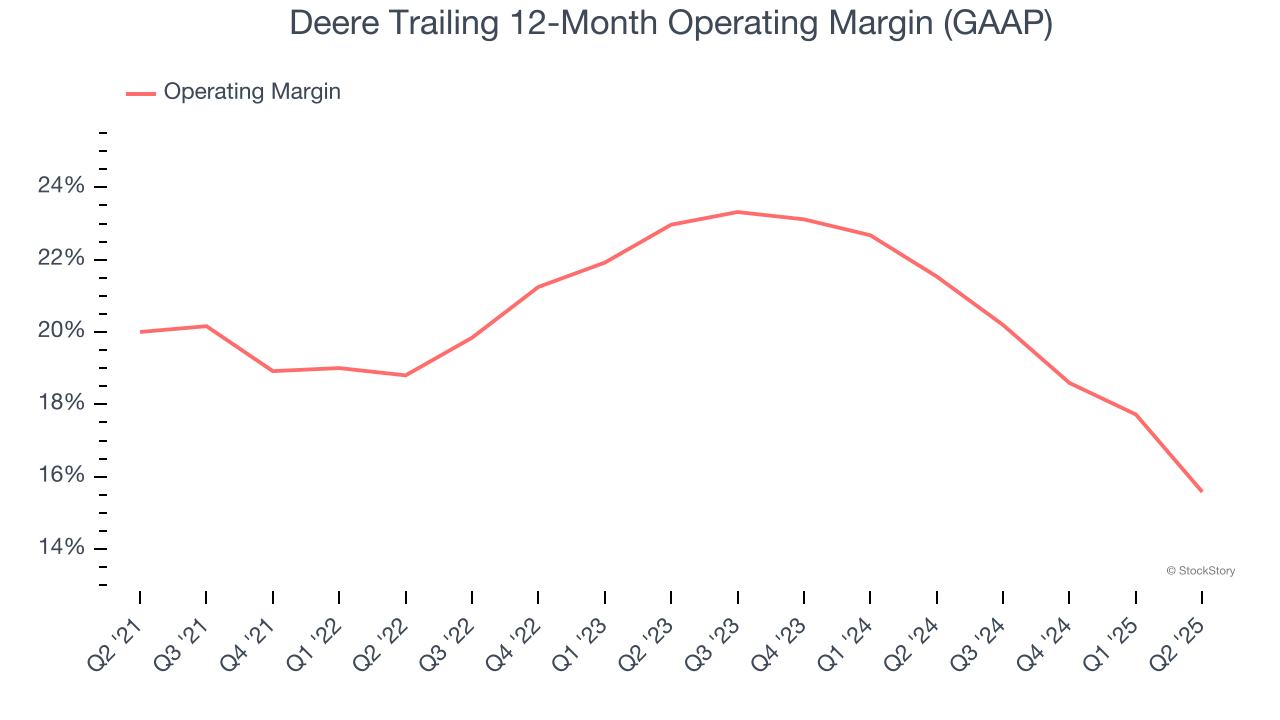
In Q2, Deere generated an operating margin profit margin of 13%, down 7.1 percentage points year on year. This contraction shows it was less efficient because its expenses grew faster than its revenue.
Earnings Per Share
We track the long-term change in earnings per share (EPS) for the same reason as long-term revenue growth. Compared to revenue, however, EPS highlights whether a company’s growth is profitable.
Deere’s EPS grew at a spectacular 17.4% compounded annual growth rate over the last five years, higher than its 4.6% annualized revenue growth. However, this alone doesn’t tell us much about its business quality because its operating margin didn’t improve.
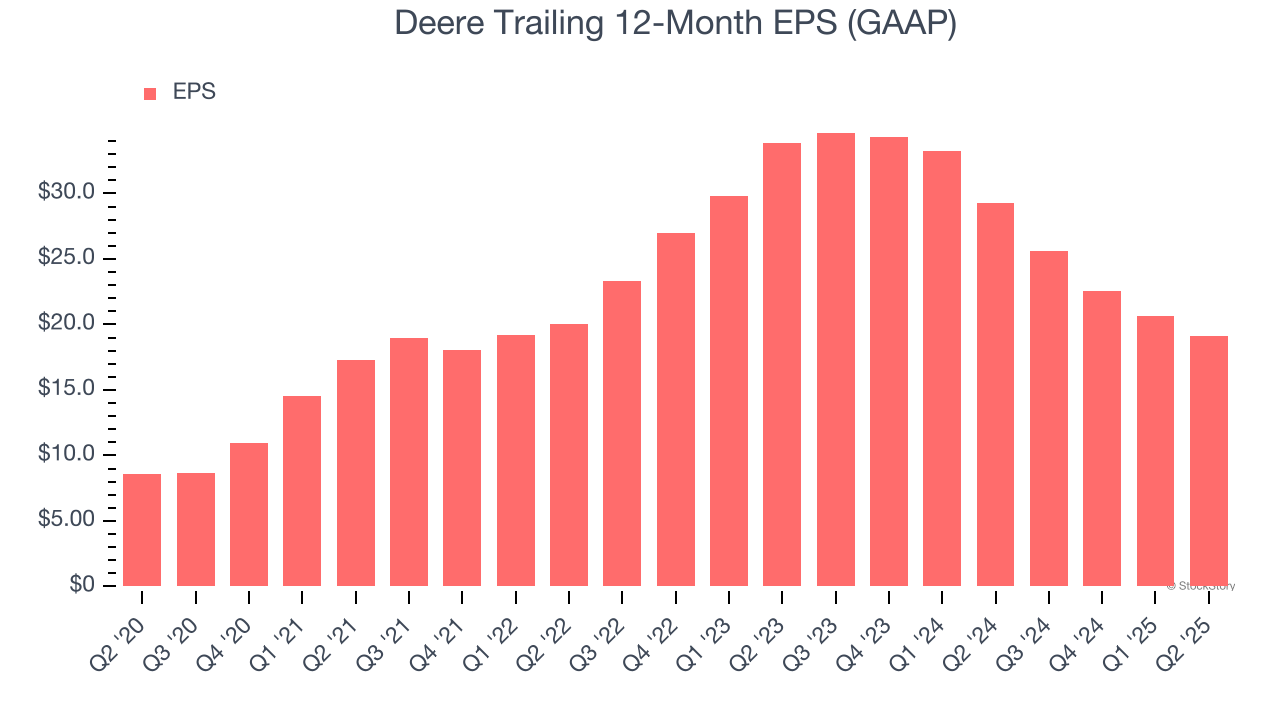
Diving into Deere’s quality of earnings can give us a better understanding of its performance. A five-year view shows that Deere has repurchased its stock, shrinking its share count by 14.1%. This tells us its EPS outperformed its revenue not because of increased operational efficiency but financial engineering, as buybacks boost per share earnings. 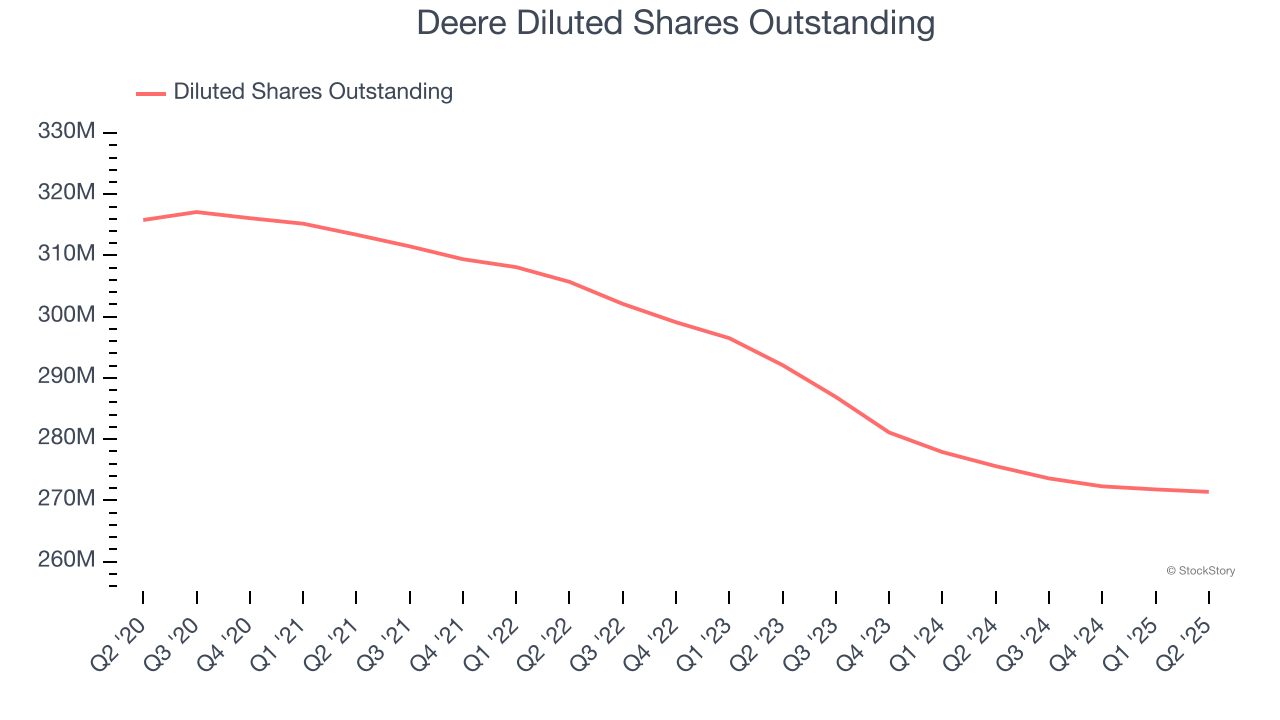
Like with revenue, we analyze EPS over a more recent period because it can provide insight into an emerging theme or development for the business.
For Deere, its two-year annual EPS declines of 24.8% mark a reversal from its (seemingly) healthy five-year trend. We hope Deere can return to earnings growth in the future.
In Q2, Deere reported EPS of $4.75, down from $6.29 in the same quarter last year. Despite falling year on year, this print beat analysts’ estimates by 3.6%. Over the next 12 months, Wall Street expects Deere’s full-year EPS of $19.13 to grow 7.4%.
Key Takeaways from Deere’s Q2 Results
We were also glad its revenue outperformed Wall Street’s estimates. On the other hand, its . Overall, we think this was a decent quarter with some key metrics above expectations. Investors were likely hoping for more, and shares traded down 4.4% to $490.49 immediately after reporting.
Is Deere an attractive investment opportunity right now? The latest quarter does matter, but not nearly as much as longer-term fundamentals and valuation, when deciding if the stock is a buy. We cover that in our actionable full research report which you can read here, it’s free.




